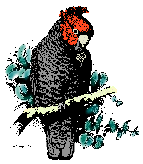I have had feedback that some people are unfamiliar with the information is in Handbook of Australian, New Zealand and Antarctic Birds (HANZAB) and therefore do not know if the online version would be useful
to them. Also, some people would like information about what is involved to access HANZAB.
The HANZAB books documented what was known, and not known, about the birds of Australia, New Zealand and Antarctica.
HANZAB online
continues to bring this information together, with the aim to provide a single source of foundational, scientific knowledge on all birds in our region to develop recommendations and strategies for effective conservation
of the Australasian and Antarctic environments. While the information in HANZAB can be very detailed, there is plenty of useful information that is easy to read and useful for people just wanting to know about our birds. Eg., the information on behaviour,
movements and breeding. Most entries include information under the
headings listed at the end of this message.
HANZAB online takes the enormous amount of information published in the HANZAB books and makes it more relevant and more accessible:
- It is
free to access and
you do not need to be a member of Birdlife Australia.
- It is organised to make it easier to find information.
- The organisation of the information about the birds has been updated to align with the sequence and names in the current BirdLife Australia, Birdlife International and Ornithological
Society of New Zealand lists. This organisation will be updated regularly, using the soon to be released (June 2025) international list (AviList) in the future.
- The text is being formatted to make it easier to read and improve accessibility.
- The text is being updated.
Even though the colour illustrations from the HANZAB books are still being loaded (495 added so far), updating of the information has already started:
- English names, scientific names, and subspecies have been updated, together with notes about species, orders, families and subfamilies that have been split, merged or are no
longer in the taxonomy;
- the taxonomy and notes about changes will be maintained in the future.
- distribution maps have been updated for 144 species;
- a bibliography of recent references has been added to 170 species;
- conservation status1 has been added to 349 species;
- audio has been added to 60 species;
- links to photos and audio on other sites have been added.
As well, the first complete review and update of a species in
HANZAB has been done. The new text for Albert’s Lyrebird was released on 11 March 2025. Currently, there are 16 other species being reviewed. The changes that have been made are documented in the
Contents/Release notes page and, for changes on each page, in the ‘Content changes’ section of that page. As well, the text is gradually being formatted to make it easier to read and, starting with
the next release, to make it more accessible for people who are vision impaired.
Accessing
HANZAB is easy. However, as it requires an account to access the pages about the birds, I have been asked to provide some information about how to create an account (see
Accessing HANZAB). An account is not required to read the introductory and supporting information, which is accessed from the menu on the home page.
I hope the changes being made to HANZAB are making it an increasingly useful and valuable resource, which is accessible to more people.
Please let me know if you think there are other changes that would improve the usefulness of HANZAB.
Cheers
Steve
1 For Australian species, conservation status sourced from Garnett, ST & GB Baker (eds.). 2020.
The Action Plan for Australian Birds 2020 CSIRO Publishing, Melbourne.
Accessing HANZAB
The HANZAB web site is accessed at
https://hanzab.birdlife.org.au/ . Some of the introductory and information pages are accessible from the menu without logging in. However, to access the information about species, orders, families and subfamilies,
you will need to log in with a BirdLife account.
NOTE: You do not need to be a member of Birdlife Australia to have an account to access HANZAB.
For members of BirdLife Australia, you probably already have a Birdlife Australia account (see instructions below if you have forgotten your password or are unsure if you have a Birdlife account). Otherwise,
you will need to setup an account.
Log in or create a new account
Go to the
HANZAB web site.
Click on ‘Log in’ in the menu.
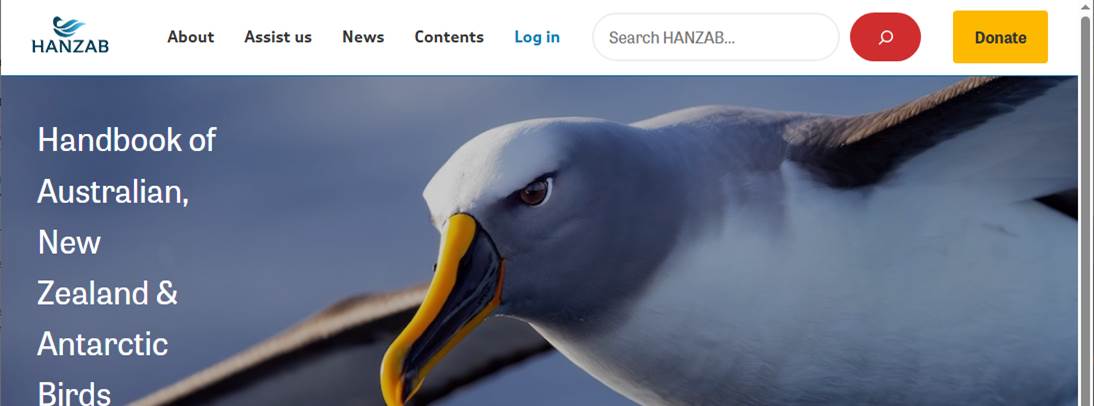
You can Log in, or Create a new account:
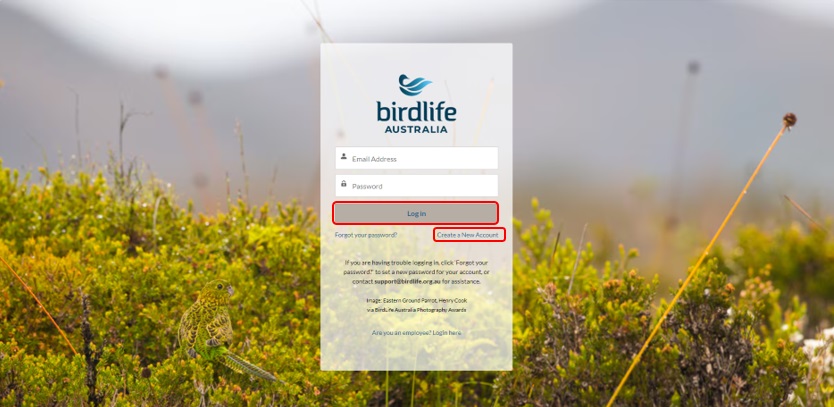
If you are unsure if you have a BirdLife account, or if you have forgotten your password, please click ‘Forgot your password?’ underneath the ‘Log in’ button, on the left. Instructions on resetting your password
will be sent to the email address you entered. Remember to also look in your spam folder for the email.
If you didn’t receive an email, BirdLife may not have an account set up for you, even if you have supported us in the past. Setting up an account is simple, go Back to login and click Create a New
Account.
If you can’t log in, or create a new account, send an email to
Create a new BirdLife Australia account
Click on ‘Create a new account’, located under the ‘Log in’ button, on the right.
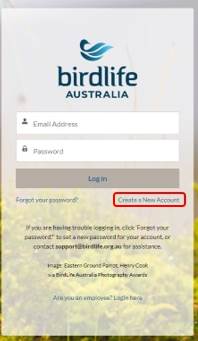
Enter your first name, last name, and email and press Sign Up.

A screen will appear asking you to enter a verification code. This will have been sent to the email address you entered on the screen before.
• Check your email. The code will be in an email with the subject line “Verify your new account”
• The six-digit code will be at the bottom of the email. Ensure you have checked your spam and other folders if you cannot see it.
• Enter the six-digit code in the screen where you were asked to enter a verification code, and click ‘Verify‘.
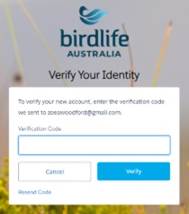
You will then be asked to create a password.
• Instructions on creating a valid password are shown on the screen.
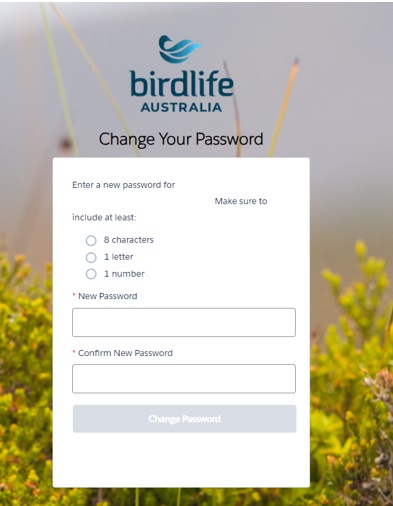
When you have set your password, you should stay logged in and have access to all HANZAB pages.
List of major headings
Below is a list of the major headings and some examples of the sub-headings for HANZAB species.
- Taxonomic changes
- Field Identification
- Habitat
- Distribution and Population
- Breeding
- Introductions
- Change in range, populations
- Population(s)
- Survival and Mortality
- Status
- Conservation Status
- Threats and Human interactions
- Movements
- Departure
- Return
- Dispersal of young
- Banding
- Long distance recoveries
- Longevity
- Food
- Behaviour
- Associations with other species
- Seasonal variation and times of foraging
- Pest status
- Detailed Studies (includes lists of things eaten)
- Young
- Intake
- Social Organisation
- Gregariousness
- Co-operative breeding
- Parental Care
- Independence and dispersal of young:
- Examples of life histories:
- Breeding Dispersion
- Territories
- Roosting
- Social Behaviour
- Flock behaviour
- Agonistic behaviour
- Sexual behaviour
- Relations within Family Group
- Feeding of young
- Behavioural development of young:
- Dependence of young on adults
- Anti-predator responses of young
- Parental anti-predator strategies
- Voice
- Mimicry
- Non-vocal Sounds
- Adult
- Young
- Breeding
- Season
- Site
- Nest, Materials
- Eggs
- Clutch Size
- Laying
- Incubation
- Young
- Growth
- Parental Care, Role of sexes
- Fledging to independence
- Success
- Reasons for failure
- Predators
- Cuckoos
- Parasites
- Plumages (very detailed description of plumages)
- Bare Parts
- Moults
- Measurements
- Weights
- Structure
- Ageing, Sexing
- Recognition
- Geographical Variation
- References
- Bibliography
- Original text from HANZAB book
- Multimedia
- Content updates
